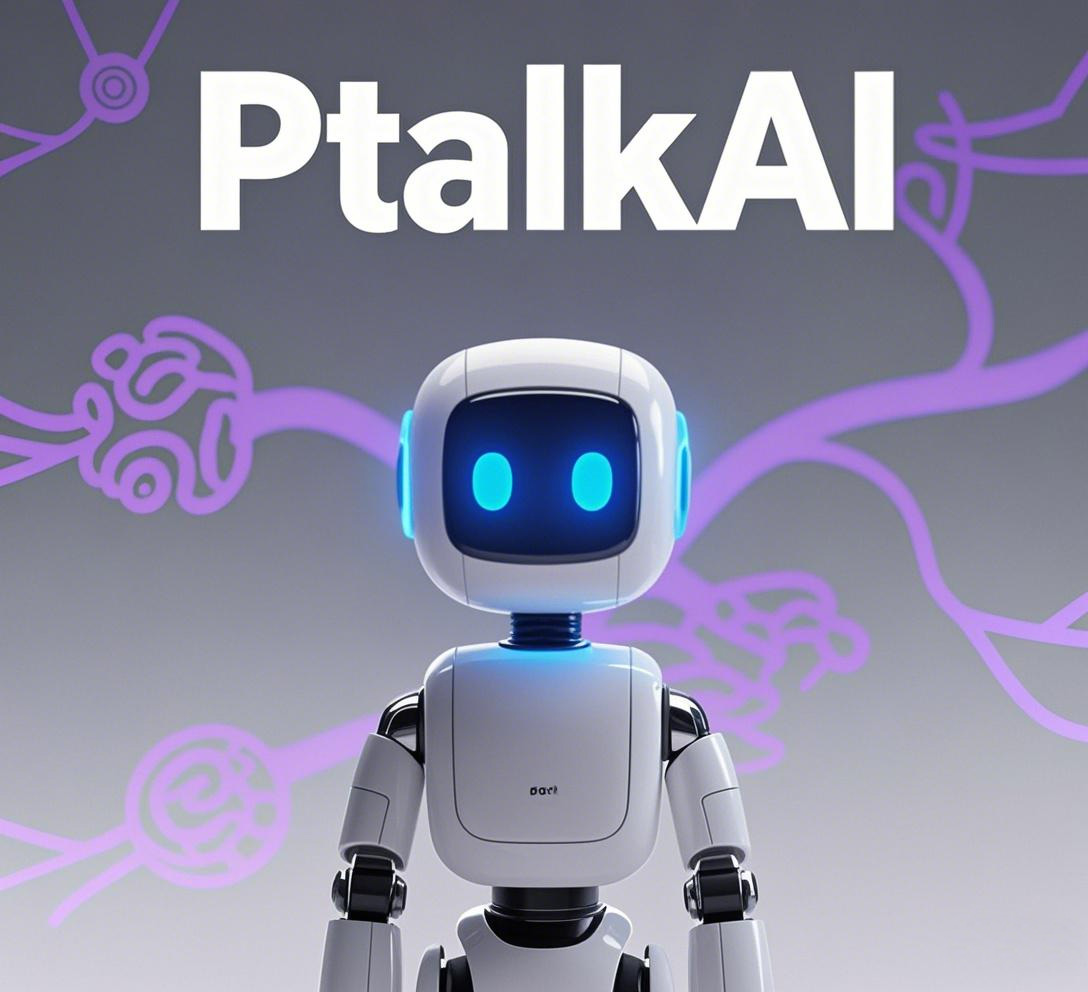Choosing the Right AI Assistant: A Practical Guide for Everyday Users
Understanding AI Assistants and Their Role in Daily Life
Artificial Intelligence (AI) assistants have become an essential part of modern life, offering help with everything from scheduling tasks to answering complex questions. These digital helpers operate by processing natural language, allowing users to interact with them using voice commands or text inputs. Whether embedded in smartphones, smart speakers, or online platforms, AI assistants function by analyzing user requests and generating relevant responses based on vast datasets they have been trained on. Unlike traditional software that follows rigid instructions, AI assistants continuously improve their performance by learning from user interactions, making them increasingly personalized over time
The significance of choosing the right AI assistant cannot be overstated. With a growing number of platforms available, each offering distinct features and capabilities, selecting the most suitable one can significantly impact productivity, convenience, and overall user experience. Some AI assistants excel in voice recognition and hands-free control, making them ideal for individuals who frequently use smart home devices. Others are optimized for content creation, research, or business applications, providing advanced tools for professionals and students. The right choice depends on individual needs, such as preferred interface (voice or text), integration with existing devices, and specific functionalities required for daily tasks
For example, a student might benefit from an AI assistant that excels in summarizing academic materials and generating study notes, while a business professional may require an AI tool capable of analyzing market trends and drafting reports. Similarly, a home user might prioritize an AI assistant that seamlessly connects with smart appliances, enabling voice-controlled automation of household tasks. The diversity of available AI assistants means that users must carefully evaluate their options to find the one that aligns with their lifestyle and goals
Moreover, the effectiveness of an AI assistant largely depends on its ability to understand context and provide accurate, relevant responses. Some platforms specialize in specific domains, such as medical advice, financial planning, or creative writing, offering tailored insights that generic assistants may not deliver. As AI technology continues to evolve, these assistants are becoming more adept at handling complex queries, making them indispensable tools in both personal and professional settings. Understanding the role of AI assistants and the factors that influence their performance is the first step toward harnessing their full potential in everyday life
Overview of Popular AI Assistant Platforms
With the rapid advancement of artificial intelligence, several AI assistant platforms have emerged as industry leaders, each offering unique features and capabilities. Among the most widely used are Siri, Google Assistant, and Alexa—voice-activated assistants integrated into smartphones, smart speakers, and other connected devices. These platforms excel in voice recognition, allowing users to perform tasks such as setting reminders, sending messages, and controlling smart home devices through natural language commands. For instance, Google Assistant is particularly known for its seamless integration with Android devices and Google services, providing personalized search results, calendar management, and real-time translation. Alexa, developed by Amazon, offers extensive compatibility with smart home products and boasts a vast library of third-party skills that extend its functionality beyond basic voice commands
In addition to these widely recognized assistants, large-scale AI models like ChatGPT, Gemini, and Claude 3 have gained popularity for their advanced text-based capabilities. Unlike traditional voice assistants, these models are designed to generate human-like text responses, making them ideal for tasks such as content creation, research, and problem-solving. ChatGPT, developed by OpenAI, has become a go-to tool for users seeking assistance with writing, coding, and answering complex questions. Its ability to engage in multi-turn conversations and provide detailed explanations makes it particularly useful for students, professionals, and content creators. Similarly, Google’s Gemini and Anthropic’s Claude 3 offer powerful language processing capabilities, with Gemini excelling in multimodal reasoning—combining text, images, and other data types—while Claude 3 is known for its strong reasoning and analytical skills, making it a preferred choice for technical and enterprise applications
Another significant player in the AI assistant landscape is Microsoft’s Copilot, which integrates directly with Microsoft 365 applications such as Word, Excel, and PowerPoint. This AI assistant enhances productivity by helping users draft emails, generate reports, and analyze data within familiar office software. Unlike standalone AI models, Copilot functions as a contextual assistant, providing real-time suggestions and automating repetitive tasks based on the user’s workflow. This level of integration makes it particularly valuable for business professionals who rely heavily on Microsoft products
Beyond general-purpose AI assistants, specialized platforms cater to niche applications. For example, Midjourney and DALL-E focus on image generation, allowing users to create visual content from text prompts. These tools are widely used by designers, marketers, and artists who seek to generate unique visuals quickly. Similarly, AI assistants like Jasper and Copy.ai are designed specifically for content marketing, helping businesses streamline copywriting, social media management, and SEO optimization. These specialized platforms highlight the growing diversity of AI assistants, offering tailored solutions for different industries and use cases
As AI technology continues to evolve, the range of available assistants will only expand, providing users with increasingly sophisticated tools to enhance their daily lives. Whether through voice-activated commands, text-based interactions, or specialized applications, AI assistants are reshaping how individuals and businesses approach productivity, creativity, and decision-making.
Comparing Domestic AI Assistant Platforms
In the rapidly evolving landscape of artificial intelligence, China has emerged as a major player, developing several large-scale AI models that cater to both individual and enterprise users. Among the most prominent domestic AI assistant platforms are Tongyi Qianwen (通义千问) , Ernie Bot (文心一言) , and Tencent Yuanbao (腾讯元宝) . These platforms, developed by Alibaba, Baidu, and Tencent respectively, offer a range of features tailored to different applications, from everyday tasks to advanced business solutions. Understanding their strengths and limitations can help users choose the most suitable AI assistant based on their specific needs.
Tongyi Qianwen (通义千问) , developed by Alibaba Cloud, is one of the most versatile AI models in China. It excels in natural language understanding, code generation, and multi-modal reasoning, making it an excellent choice for both casual users and professionals. One of its key advantages is its seamless integration with Alibaba’s ecosystem, including Taobao, DingTalk, and other business tools. This allows users to leverage AI for tasks such as customer service automation, document summarization, and even intelligent data analysis. Additionally, Tongyi Qianwen supports multiple languages, making it accessible to international users. However, while it performs well in general-purpose tasks, some users have noted that it may not be as specialized in certain niche applications compared to other models
Ernie Bot (文心一言) , developed by Baidu, is another leading AI assistant in China, known for its strong language comprehension and generation capabilities. It has been widely adopted in education, media, and enterprise settings, where it assists with content creation, research, and customer interaction. One of its distinguishing features is its ability to generate high-quality text in Chinese, making it particularly valuable for users who primarily work with Mandarin content. Ernie Bot also integrates with Baidu’s search engine and cloud services, offering enhanced support for online information retrieval and data analysis. However, some users have reported that its English language processing is not as refined as its Chinese capabilities, which may limit its appeal for international applications
Tencent Yuanbao (腾讯元宝) , developed by Tencent, is designed to provide a comprehensive AI-powered experience across various Tencent services, including WeChat, QQ, and Tencent Cloud. It is particularly effective in conversational AI, offering smooth and natural interactions for chat-based applications. One of its key strengths is its integration with Tencent’s social media and messaging platforms, making it an ideal choice for businesses looking to enhance customer engagement through chatbots and automated responses. Additionally, Tencent Yuanbao has strong multimodal capabilities, allowing it to process text, images, and audio seamlessly. However, compared to Tongyi Qianwen and Ernie Bot, it may not be as widely adopted outside of Tencent’s ecosystem, which could be a limitation for users seeking broader compatibility
Each of these platforms offers unique advantages, and the choice between them depends on the user’s specific requirements. For general-purpose AI assistance with strong multilingual support, Tongyi Qianwen is an excellent option. Those focusing on Mandarin content and Chinese language applications may find Ernie Bot more suitable. Meanwhile, users deeply integrated into Tencent’s ecosystem will benefit most from Tencent Yuanbao ’s conversational AI capabilities and seamless integration with social media platforms.
Comparing International AI Assistant Platforms
Among the most widely used international AI assistant platforms, Claude 3 , Gemini , and ChatGPT stand out for their advanced language processing capabilities and diverse applications. Each of these models offers unique strengths, making them suitable for different use cases ranging from everyday productivity to complex analytical tasks. Understanding their core features and optimal applications can help users select the most appropriate tool based on their specific needs.
Claude 3 , developed by Anthropic, is known for its strong reasoning abilities and emphasis on safety and reliability. Unlike some AI models that prioritize raw performance over ethical considerations, Claude 3 is designed with built-in safeguards to minimize harmful or misleading outputs. This makes it particularly valuable for enterprise applications, legal research, and compliance-related tasks where accuracy and responsible AI behavior are crucial. Additionally, Claude 3 excels in handling long-form content, making it an excellent choice for summarizing lengthy documents, generating structured reports, and engaging in multi-step reasoning. However, compared to other large-scale models, its accessibility is somewhat limited, as it is primarily available through a paid API rather than a free consumer-facing interface
Gemini , developed by Google, is one of the most versatile AI models due to its multimodal capabilities. Unlike text-only models, Gemini can process and generate content across multiple formats, including text, images, audio, and video. This makes it particularly useful for creative professionals, educators, and businesses that require AI assistance beyond simple text generation. For example, Gemini can analyze visual content, generate image descriptions, or even assist in video editing workflows. Additionally, its deep integration with Google’s ecosystem—such as Google Search, Gmail, and Google Workspace—enhances its utility for users already invested in Google services. However, while Gemini’s multimodal reasoning is highly advanced, some users have noted that its conversational fluency may not be as polished as other models, particularly in complex dialogue scenarios
ChatGPT , developed by OpenAI, remains one of the most popular AI assistants due to its accessibility and broad applicability. Available through both free and subscription-based versions, ChatGPT offers robust natural language understanding and generation, making it ideal for content creation, coding assistance, and educational purposes. Its ability to engage in multi-turn conversations and provide detailed explanations has made it a favorite among students, writers, and professionals seeking AI-driven insights. Additionally, the availability of plugins and third-party integrations allows ChatGPT to extend its functionality into areas such as financial analysis, scientific research, and real-time data retrieval. However, one notable limitation is its occasional tendency to generate confident-sounding but incorrect information, requiring users to verify critical facts independently
Each of these platforms offers distinct advantages, making them suitable for different scenarios. Claude 3 is ideal for enterprise and compliance-driven applications, Gemini excels in multimodal reasoning and creative workflows, and ChatGPT provides a widely accessible, general-purpose AI assistant with extensive customization options.
How to Choose the Best AI Assistant Based on Your Needs
Selecting the right AI assistant depends on your specific requirements, preferences, and the tasks you intend to perform. Whether you are a student, professional, or casual user, different AI assistants offer varying levels of support in areas such as productivity, content creation, research, and automation. By evaluating key criteria such as ease of use, compatibility with existing tools, and specialized features, you can identify the AI assistant that best aligns with your lifestyle and goals.
One of the primary considerations when choosing an AI assistant is the interface and interaction method. If you prefer voice commands for hands-free operation, platforms like Google Assistant , Siri , or Alexa may be more suitable. These assistants integrate seamlessly with smart home devices, allowing you to control lighting, temperature, and entertainment systems using natural language. On the other hand, if your primary use case involves text-based interactions such as writing, research, or coding, ChatGPT , Claude 3 , or Tongyi Qianwen may offer more robust capabilities for generating and refining written content
Another crucial factor is compatibility with your existing digital ecosystem. If you primarily use Google Workspace , Microsoft 365 , or Alibaba Cloud , selecting an AI assistant that integrates with these platforms can significantly enhance productivity. For instance, Google Gemini works best with Google services, while Microsoft Copilot is designed to complement Microsoft Office applications. Similarly, Tencent Yuanbao is optimized for use with WeChat and other Tencent services, making it a preferred choice for users deeply embedded in China’s digital landscape
Specialized features also play a vital role in determining the right AI assistant. If you require advanced reasoning capabilities for tasks like legal analysis, financial modeling, or scientific research, Claude 3 and Gemini are particularly strong in structured problem-solving and data interpretation. Conversely, if your focus is on creative content generation, such as writing articles, designing visuals, or developing marketing copy, ChatGPT , Midjourney , or Baidu’s Ernie Bot may be more suitable, depending on your preferred language and industry
Ultimately, the best AI assistant is one that enhances your efficiency without requiring excessive effort to learn or adapt. Experimenting with different platforms and leveraging trial versions or free tiers can help you determine which AI assistant aligns most closely with your daily workflow and long-term objectives.
Key Takeaways and the Future of AI Assistant Selection
Choosing the right AI assistant is a highly personalized decision that depends on individual needs, workflow preferences, and the specific tasks one aims to accomplish. Throughout this discussion, we have explored various AI platforms, both domestic and international, each offering unique strengths in areas such as voice interaction, text generation, multimodal reasoning, and integration with existing digital ecosystems. Whether prioritizing conversational fluency, specialized domain knowledge, or seamless compatibility with workplace tools, users must evaluate these factors to make an informed choice
One of the most critical takeaways is that no single AI assistant is universally superior. The effectiveness of an AI tool is determined by how well it aligns with the user's requirements. For instance, a student may benefit more from an AI assistant that excels in summarizing academic material and generating study guides, while a business professional might require an AI model capable of analyzing market trends and drafting reports. Similarly, users invested in specific digital ecosystems—such as Google Workspace, Microsoft 365, or Tencent services—will find greater value in AI assistants that integrate smoothly with these platforms
Beyond current capabilities, it is also essential to consider the evolving nature of AI technology. As AI models continue to improve in accuracy, adaptability, and domain-specific expertise, the landscape of AI assistants will expand further. Future developments may bring even more specialized AI tools tailored to niche industries, enhanced multimodal capabilities that combine text, images, and voice, and greater emphasis on ethical AI practices that ensure reliability and transparency
Given this dynamic environment, staying informed about emerging AI technologies and experimenting with different platforms can help users make better decisions. Rather than settling on a single AI assistant permanently, individuals should remain open to exploring new tools as they become available, ensuring they continue to benefit from the most advanced and suitable AI solutions for their evolving needs













